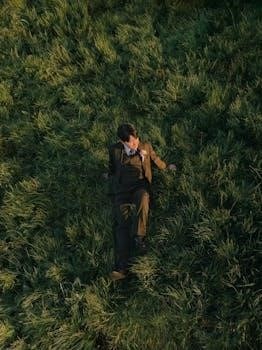
Monks in D&D 5e are martial artists dedicated to spiritual enlightenment. They harness Ki, a mystical energy, for superhuman feats in combat. Unlike other holy classes, they rely on internal power rather than deities. Monks are unique and unusual.
What is a Monk in D&D 5e?
In D&D 5e, a Monk is a unique class, mastering martial arts and spiritual energy to achieve extraordinary feats. They are not typical spellcasters, instead channeling an inner energy known as Ki. This Ki allows them to perform superhuman actions. Monks are dedicated to personal perfection through rigorous training and contemplation. They are masters of unarmed combat, often striking with rapid precision. Unlike other holy classes, Monks don’t draw power from gods or nature, but from themselves. Monks are iconic martial artists, with a style that emphasizes agility, speed, and precision. They use their Ki to enhance their physical abilities. They are mobile and difficult to hit, making them effective in combat. A Monk seeks spiritual enlightenment and physical mastery. They are a versatile class, capable of fulfilling multiple roles in a party.
Core Monk Mechanics
Monks rely on Dexterity and Wisdom for their abilities, impacting defense and Ki. They utilize Unarmored Defense and movement for agility. Ki powers their special abilities in combat, making them unique.
Primary Attributes⁚ Dexterity and Wisdom
Dexterity and Wisdom are paramount for Monks in D&D 5e, directly influencing their combat effectiveness and abilities. Dexterity enhances a Monk’s Armor Class (AC), attack rolls, and some saving throws, making them more agile and difficult to hit in battle. A high Dexterity score allows for better movement and dodging capabilities. Wisdom, on the other hand, is critical for a Monk’s Ki-based abilities, as it directly determines the effectiveness of many Monk features. This includes the saving throws required by their abilities, as well as their overall spiritual power. Combining these two attributes makes Monks both nimble and spiritually powerful, which is why they are considered the most important for this class.
Unarmored Defense and Movement
Unarmored Defense is a key feature for Monks, enabling them to remain agile and effective without wearing armor. This ability allows a Monk to calculate their AC based on their Dexterity and Wisdom modifiers, enhancing their natural defenses. It emphasizes the Monk’s training and physical discipline, making them less reliant on traditional armor. Furthermore, Unarmored Movement boosts their speed, allowing them to move quickly across the battlefield. This feature increases a Monk’s mobility and allows them to dodge attacks more effectively. Wearing armor would negate these benefits, as it would interfere with their natural agility and ability to channel their ki. Together, these features make Monks highly mobile and difficult to hit.
Ki and its Uses
Ki is a crucial resource for Monks, representing their inner energy and spiritual power. This energy fuels many of their special abilities and techniques, allowing them to perform superhuman feats. Monks use Ki to enhance their attacks with Flurry of Blows, increasing their combat effectiveness. It also powers defensive maneuvers like Patient Defense, improving their survivability. Furthermore, Ki can be used for movement-related actions such as Step of the Wind, adding to their agility and versatility. Managing Ki effectively is essential for Monks, as it allows them to utilize a wide array of abilities, ranging from offensive strikes to defensive tactics and mobility enhancements. Understanding and mastering Ki is key to maximizing a Monk’s potential in combat situations.

Monk Class Features
Monks gain unique abilities as they level up. These features include Martial Arts, which enhances unarmed combat, and proficiencies with certain weapons. Hit points and skill sets are also crucial aspects.
Martial Arts
The Monk’s Martial Arts feature is a cornerstone of their combat style, allowing them to utilize unarmed strikes and monk weapons with impressive skill. This feature enables monks to make an unarmed strike as a bonus action after taking the attack action, increasing their attack frequency. Furthermore, the damage die for unarmed strikes and monk weapons improves as the Monk levels, making their attacks more potent over time. Martial Arts also grants them the ability to use Dexterity for attack and damage rolls for unarmed strikes and monk weapons. This ability emphasizes a monk’s agility and precision in combat. The feature’s effects ensure that monks can engage effectively in combat while utilizing their martial arts skills. They are able to utilize their speed and agility in order to deal damage.
Hit Points and Proficiencies
Monks in D&D 5e have a Hit Dice of 1d8 per monk level, granting them a moderate amount of hit points, starting with 8 plus their Constitution modifier at 1st level. They gain 1d8 (or 5) plus their Constitution modifier per monk level after that. Monks have limited proficiencies; they are proficient with simple weapons and shortswords, but not with any armor or shields. This emphasizes their reliance on agility and mobility, rather than physical protection. They have proficiency in saving throws with Strength and Dexterity, and can choose one artisan’s tool or musical instrument for proficiency. These proficiencies encourage monks to be nimble and quick in combat situations. Their overall proficiencies and hit points reflect their fighting style.

Monastic Traditions
Monks choose a Monastic Tradition at 3rd level, shaping their Ki usage and combat style. Popular traditions include the Way of the Open Hand, Way of Shadow, and Way of the Four Elements. Each offers unique abilities.
Way of the Open Hand
The Way of the Open Hand is a monastic tradition focused on martial prowess and mastery of unarmed combat. Monks who follow this path are versatile fighters, excelling in both offense and control; They learn to manipulate their opponents’ bodies and energies, using techniques like stunning strikes, pushing attacks, and even healing themselves through focused meditation. This tradition emphasizes a balance between physical discipline and inner peace, making its practitioners highly adaptable in various combat situations. The Way of the Open Hand is a great choice for players who like to play a monk that is adept at many different things, rather than being focused on just one thing, and is also a great choice for beginners to the monk class.
Way of Shadow
The Way of Shadow is a monastic tradition that emphasizes stealth, speed, and deception. Monks of this path are adept at moving unseen, striking from the darkness, and using shadow magic to their advantage. They can teleport short distances, become invisible, and use illusions to confuse their enemies. These monks are often found operating in the shadows, acting as spies, assassins, or infiltrators. The Way of Shadow is a great choice for players who want to play a monk that is stealthy and elusive, preferring to avoid direct confrontation and strike from unexpected angles. They are masters of infiltration and deception, making them a valuable asset to any adventuring party that needs to sneak into a place undetected.
Way of the Four Elements
The Way of the Four Elements allows monks to harness the power of earth, air, fire, and water. These monks use their Ki to manipulate these elements, creating gusts of wind, waves of fire, or walls of stone. This monastic tradition combines martial arts with elemental magic, creating a versatile and potent combatant. They can blast enemies with fire, create temporary cover from earth, or use water to enhance their mobility. However, the Way of the Four Elements is often considered less powerful than other monastic traditions due to its Ki point cost. Despite this, it remains a great choice for players who want to play a monk that can control the elements.

Optimizing Your Monk
To optimize your Monk, select races that boost Dexterity and Wisdom. Choose skills like Stealth and Acrobatics. Consider feats that enhance mobility and combat capabilities. Adapt your playstyle to your party’s needs.
Best Races for Monk
Selecting the right race significantly impacts a Monk’s effectiveness in D&D 5e. High Dexterity is crucial, making races like Wood Elves and Tabaxi excellent choices due to their Dexterity bonuses. These races also often provide additional benefits such as increased movement speed or stealth proficiency, which synergize well with the Monk’s mobility-focused playstyle. Additionally, races with Wisdom bonuses, like the Hill Dwarf or Aasimar, are valuable for enhancing Ki abilities and defenses. Firbolgs, with their Wisdom and Strength bonus, present an interesting option, though the Strength increase is less beneficial than Dexterity. Ultimately, the best race for your Monk will depend on your preferred playstyle and desired balance between combat prowess and utility, but prioritizing Dexterity and Wisdom is key.
Skill Selection
Skill selection for a Monk in D&D 5e should complement their agility and mobility, focusing on skills that leverage their Dexterity and Wisdom. Acrobatics is essential for maneuvering through combat and difficult terrain, aligning with the Monk’s nimble nature. Stealth allows for scouting and tactical positioning, enabling surprise attacks and escapes. Insight is also valuable, aiding in social situations and detecting deception, using the Monk’s high Wisdom. Perception is crucial for spotting threats and hidden objects, a vital skill for any adventurer. Athletics can enhance movement and grappling. Choosing skills that play to a monk’s strengths will provide an edge in both combat and exploration scenarios, ultimately enhancing their overall usefulness to the party. Monks should be focused on their strengths.
Feats for Monks
Selecting the right feats for a Monk in D&D 5e is crucial for optimizing their combat and utility. Mobile is a top choice, enhancing their already impressive movement and allowing for hit-and-run tactics. Observant greatly improves Wisdom-based skills like Perception and Insight, making the Monk a more reliable scout and information gatherer. Lucky provides a valuable edge, allowing for rerolls on failed attack rolls and saving throws. Tough will increase the Monk’s survivability, by giving additional hitpoints. The feat Martial Adept grants access to maneuvers, adding combat options. Feats should boost a Monk’s strengths, like movement, or improve existing weaknesses, such as their hit points. Careful selection of feats will make a monk a force to reckon with.

Monk in Combat
Monks excel in hit-and-run tactics, using mobility and rapid strikes. They can control the flow of combat with their actions and bonus actions. They are masters of unarmed combat and can target weak enemies effectively.
Role in a Party
Monks often serve as highly mobile skirmishers within a D&D 5e party, darting in and out of combat to deliver flurries of attacks. Their ability to move quickly and strike rapidly allows them to harass enemies and disrupt formations. They are not primarily designed to be tanks, but their agility makes them difficult to hit. Monks can also be effective at taking down weaker enemies, especially when they focus their ki-powered abilities to eliminate threats quickly. They can act as scouts due to their stealth and mobility, exploring ahead while the heavier party members follow. A well-played Monk can adapt to various roles, from controlling enemy movement to dealing significant damage over time, depending on their chosen monastic tradition. Their versatility is their strength, making them a valuable asset to any adventuring group, if used wisely, they can be a huge asset.
Utilizing Mobility and Rapid Strikes
Monks in D&D 5e are masters of mobility and rapid attacks, using their movement and abilities to their advantage. Their Unarmored Movement feature allows them to swiftly traverse the battlefield, repositioning to gain tactical advantages. This mobility enables hit-and-run tactics, making them difficult to target. Their Martial Arts feature grants them multiple attacks, often more than any other class, allowing them to unleash a flurry of strikes. Combining movement with attacks like Flurry of Blows, Monks can overwhelm opponents with a barrage of fists and feet. They can strike, reposition, and strike again to take down enemies before they can react. Utilizing their Ki points to enhance their movement and attack speed can make them a force to be reckoned with, enabling them to control the tempo of combat and dominate the field.